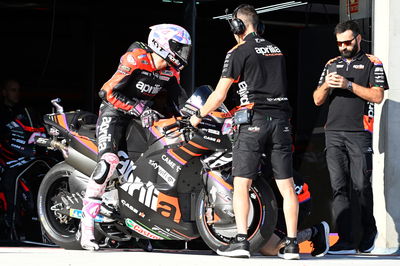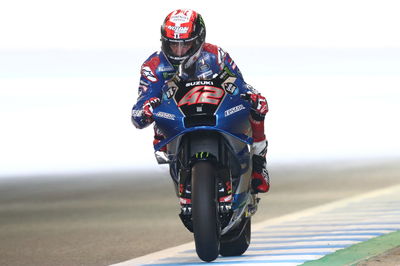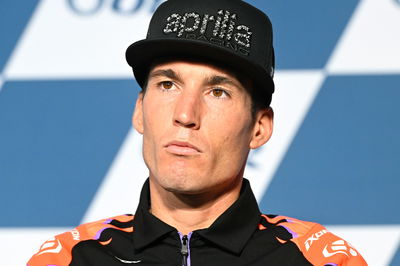MotoGP eco laps: Map or manual, 'we want maximum power'

Eco maps are a special engine setting used by most, but not all, manufacturers to save the maximum amount of fuel when riding from the pits (where all refuelling must be done) to the grid on the sighting lap.
However, in Espargaro’s case the map wasn’t then disabled and as his bike crept slowly away at the start of the warm-up lap, due to an 'eco' limit of 5,000rpm and 100km/h, the Spaniard knew his race was doomed.
Most riders whose machines also use a special eco-map confirmed on Thursday that, as for Espargaro, the setting has to be removed by an engineer. Only Honda's Alex Marquez suggested possible rider or 'manual' control of the eco map.
As such, title contender Espargaro had no choice but to pit at the end of the warm-up lap and jump onto his spare RS-GP. But the damage had been done and he eventually finished outside the points, in 16th.
“We used that mistake to re-analyse everything, to try to improve. It was not as simple as it looked, the problem," Espargaro said. “It was a human mistake. It can happen.”
While the throttle-hungry Motegi layout has always been one of the toughest for fuel consumption, the relatively recent addition of acceleration-boosting wings and ride-height devices has made MotoGP machines even more thirsty.
Espargaro’s team-mate Maverick Vinales revealed the eco map setting is now used at ‘nearly all races’ and has become ‘totally normal procedure’.
“Maybe from [16] tracks this year, I’ve used it at 12,” Vinales said. “We try to use the least amount of fuel going to the grid, because we want to use the maximum power of the bike [throughout the race].
“As a rider we don’t control [the eco map], we don’t [do] nothing, it is [controlled by] the team.”
VR46’s Luca Marini confirmed it’s the same scenario at Ducati: “It is the engineer, the electronic guy, he needs to remember to remove it on the grid.”
“I don’t do nothing. I don’t think any riders can [operate] it,” said team-mate Marco Bezzecchi on using the map setting. “I think the only bike that doesn’t have an eco map is the Yamaha. Everybody else, it’s normal.”

Manual ‘eco map’ at Yamaha and Suzuki
RNF Yamaha’s Darryn Binder said: “The first time I’ve really been asked to [save fuel before the race] is Japan. Up until then I just rode nicely to the grid, not flat out, but this time they actually told me to ride slowly. It wasn’t fun!
“I reckon even if I didn’t do it, we’d make it [the race distance]. I think Yamaha is always on the safe side.”
But it’s not only Yamaha that relies on human fuel-saving before the race.
“We don't have a [eco] fuel map, like Aprilia,” said Suzuki’s Alex Rins. “We try to manage on the out-lap, manually. Just go with 6th gear, with a very low percentage of throttle.
“I'm quite an expert on this because always in the car I go on the [fuel] limit, many kilometres with 0 [on the gauge]!”
Meanwhile, LCR Honda’s Alex Marquez gave the most cryptic answer, perhaps suggesting the eco map cannot be accidentally 'forgotten' on the RCV or that it can be manually disabled by the rider:
“Everybody is using something similar but that [Espargaro] problem, with [what] we have now in Honda, we will never have this problem because it’s impossible. It’s more manual... I cannot explain more!”
If dry, might Sunday’s Buriram race be another event where careful fuel saving is needed on the way to the grid?
“First time was Japan, but I think here as well, we’ll see on Sunday,” said Binder.
“I think yes, because there are some long straights,” agreed fellow rookie Bezzecchi. “Normally on this kind of track we have the eco map, but it is the first time for me here [on a MotoGP bike here] so it’s difficult to say now.”
“I don’t know, but either way this is not a big problem for us, especially this year,” added Marini.
“Yeah, you have to do an eco lap but if you don’t want to [use the special map] then you can just make the sighting lap very slow and the fuel is there. It is OK. You can finish the race every time well.
“This year we never had a [fuel consumption] problem.”












